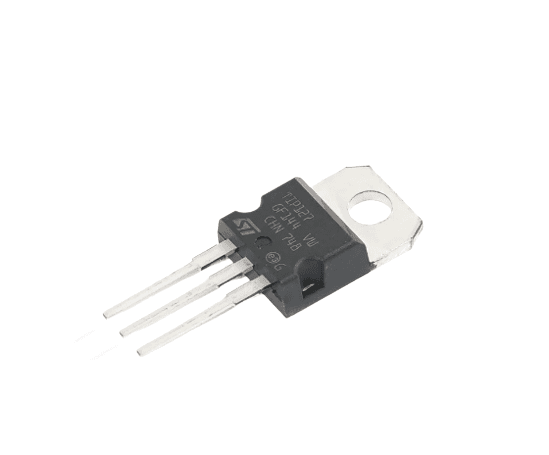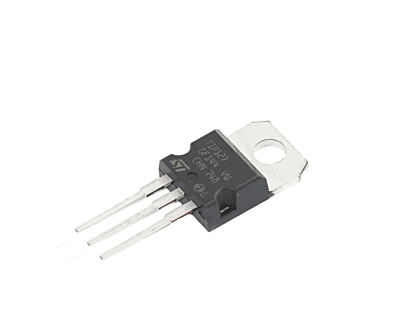

TIP127 Darlington PNP Transistor
Product Details
Transistor Type: The TIP127 is a bipolar junction transistor (BJT). Specifically, it is a PNP transistor, which means it is composed of three layers of semiconductor material: P-type (Positive), N-type (Negative), and P-type (Positive).
Darlington Pair: The TIP127 is part of a class of transistors known as Darlington pairs. A Darlington pair is a combination of two transistors connected in such a way that it provides very high current gain. The TIP127, in particular, is a single PNP Darlington transistor.
Amplification: Like most transistors, the primary purpose of the TIP127 is to amplify current. It can handle relatively high currents and is often used in applications where a small input current needs to control a larger output current.
Collector-Base-Emitter Pinout: The TIP127 has three pins: Collector (C), Base (B), and Emitter (E). Current flows from the Emitter to the Collector when a small current is applied to the Base.
Maximum Ratings: The TIP127 has specific maximum ratings, including maximum collector current (IC), maximum collector-emitter voltage (VCE), and maximum power dissipation (PD). Exceeding these ratings can damage the transistor.
Applications: The TIP127 is commonly used in applications where high-current switching or amplification is required. It can be used in motor control, relay driving, LED control, and other situations where a microcontroller or low-current signal source needs to control higher-power devices.
Heat Sink: As with other power transistors, the TIP127 can generate heat during operation, especially when handling high currents. It's important to use an appropriate heat sink to dissipate the heat and prevent the transistor from overheating.
Datasheet: To use the TIP127 effectively in your circuit, it's essential to consult the datasheet provided by the manufacturer. The datasheet contains detailed information about pin configurations, electrical characteristics, and recommended operating conditions.


